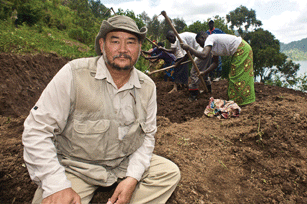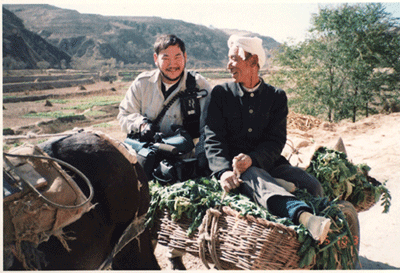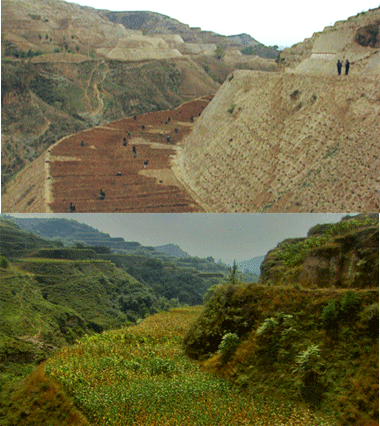
|
Published:
Sniffer dog switched on to mammal protection

|
|
The AWC’s Northern Mammal Recovery Project includes Mornington Station in north-west Australia, where Sally (see text) has been training to flush out feral cats. Credit: AWC
|
In more ways than one, dogs may be a major part of the solution to Australia’s enormous feral cat problem, which is devastating native mammal populations in the country’s north. In recent times, no other nation has seen as many of its mammals disappear, with 24 species – mostly small and medium-sized marsupials – becoming extinct over the past 200 years.1
In response, the Australian Wildlife Conservancy (AWC),2 a non-profit organisation working to conserve Australia’s threatened wildlife and ecosystems, has embarked on its Northern Mammal Recovery Project.3 The AWC owns 21 sanctuaries covering more than 2.6 million hectares around Australia. It is using several of its northern properties to implement different combinations of grazing and fire management, and to monitor the response of native fauna.
While feral cats are not the only cause of the native mammals’ decline, they play a huge role. The other culprits include altered fire patterns, and introduced herbivores such as sheep and cattle.
The AWC estimates that there is at least one feral cat per every three square kilometres in northern Australia, and that each of these kills and eats 5 to 15 native animals every day.
‘If you work with the lower estimates,’ says Dr Sarah Legge, AWC’s National Conservation and Science Manager, ‘that’s more than a million animals per day being consumed by feral cats.’
Dr Legge points out that this is a very conservative estimate, with some assessments suggesting the figure is closer to 10 million.
One reason feral cats inflict so much damage is the lack of effective broad-scale control methods. Naturally very cautious creatures, feral cats don’t readily take baits or enter traps. Their wary nature also means that the usual ecological survey techniques tend to be ineffective, making it hard to gather good knowledge on cat behaviour.

|
|
Sally Credit: AWC
|
This is the first point at which the dogs come in, or to be precise, one dog – Sally the springer spaniel. One-year-old Sally is helping AWC to understand how cat density and behaviour changes under different land management regimes.
‘Sally allows us to find cats rather than waiting for cats to come to us,’ says Dr Legge. ‘She’s locked on to cat scent and can follow trails of up to a kilometre now. It’s just a question of refining some of her skills – she still acts like a puppy – but it looks very promising.’
The second role for canines belongs to the dingo. Research at AWC’s Wongalara Sanctuary in the Northern Territory – formerly a cattle station that baited dingoes – has revealed that in the absence of baiting, dingo activity increases and cat activity decreases. The result has been a marked increase in the abundance of native reptiles. Unfortunately, there are not yet any signs that mammal populations are rebounding similarly.
‘Mammal densities through the Northern Territory are now so low that their recovery may be slow,’ says Dr Legge. ‘Cats are very good at hunting rare animals, so it’s possible that once you get the mammals down to really low abundance, it’s difficult for them to recover while there are any cats at all in the landscape.’
Given the absence of effective controls, AWC is turning to land management – in particular the manipulation of fire and grazing regimes, and dingo density – to try and at least soften the impact of feral cats.
‘For example,’ says Dr Legge, ‘if you can reduce the fire frequency, and reduce grazing pressure from introduced herbivores, you end up with more ground cover, which may make hunting more difficult for the cats.
‘[If nothing is done], I think we’re looking at a high probability of more mammal extinctions, possibly up to eight species. I don’t think the public and the government are aware yet of how serious this issue is. We’ve already got the worst mammal extinction rate in the world and it’s about to get a lot worse if we don’t solve it. The penny isn’t dropping that we’ve really got to do something about it or we’ll lose more species.’
1 Australian Government Department of Environment and Heritage, Environment Protection and Biodiversity Conservation Act: www.environment.gov.au/cgi-bin/sprat/public/publicthreatenedlist.pl?wanted=fauna
2 www.australianwildlife.org
3 AWC’s partners on the Northern Mammal Recovery Project include pastoralists and indigenous communities supported by the Land Councils; James Cook and Charles Darwin Universities; CSIRO; NT Department of Natural Resources, Environment, the Arts and Sport; WA Department of Environment and Conservation; Qld Department of Environment and Resource Management; The Nature Conservancy; and the Pew Environment Group.





